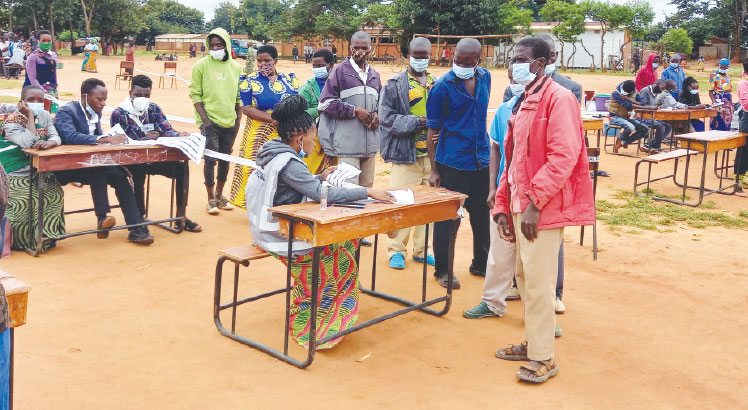Cyclone Freddy is history repeating itself
Tropical cyclones are not new in Malawi. Historical records show that in 1946 a cyclone hit the country, causing loss of l i fe and considerable damage to infrastructure and proper ty. Zomba, the colonial Capit a l , was the epicenter of the devastation at that time.
Some 46 years later, a cyclone hit the country again with Phalombe as its epicenter. Between 700 and 1 000 lives were lost in the flush floods locally known as Napolo. These numbers in terms of loss of lives are similar to those so far registered for Cyclone Freddy.
Damage to hectares of crops was more extensive in the Phalombe disaster at 30 000 all in one district, compared to 18 700 hectares by Cyclone Freddy disaster spread across 15 districts in the whole Southern Region.
In all the three disasters which have happened in the Southern Region and in March, lives have been lost; there has been damage to infrastructure, crops and property. The difference is only in scale—intensity and extensity due to population growth. The more extensive damage of road network—1 265 kilometers by Cyclone Freddy—is due to the higher level of development now compared to the previous disasters.
In terms of loss of life, numbers for Phalombe flush floods and Cyclone Freddy are not far apart— with the latter registering 676 with 537 people still reported missing.
The f i r st recorded cyclone to hit the country— called Nyasaland then, was in March, 1946. The Society of Malawi (Historical and Scientific) records that in that month and year, a disaster happened at Zomba. A special edition of the publication which was circulating in Nyasaland, Southern and Nor thern Rhodesia and East Africa, p u b l ished an ar t i c l e headlined ‘Disaster at Zomba’ with a sub head ‘Casualties And Damage Caused By Cloudburst.
Below is the verbatim report of the March 1946 publication:
‘Some loss of life is feared and much damage has been caused by heavy and continuous rainfall in Zomba. The fall of rain between Friday and Sunday totaled 28 inches. (This is about 840 centimetres for three days. The world record for rainfall in a day belongs to the French island of La Reunion in the Indian Ocean with an incredible 71.85 inches—2 155 centimetres—during Tropical Storm Denise in 1966, according to the World Meteorological Organisation).
‘Heavy floods carrying boulders and trees with them carried away all bridges and culverts on naturally communicating roads, including the bridge between the Old Boma and the commercial area of the town. The main road was carried away and the waters also disrupted road communications between the War Memorial and the New Boma.
‘Several motor cars were swept away by the flood and in an attempt to save his car, Mr. W. H. Ingram Commissioner of Prisons was drowned. His body has not yet been recovered.
‘The Public Wo rks Depar tment workshops have been completely des t royed: the power station is out of action and likely to remain so for a long period, though an auxiliary plant is being put into operation to provide minimum service. The water supply is dislocated.
‘ S ever a l E u ropean dwellings were severely damaged and lost their khondes, though no house actually collapsed. Great masses of trees piled up against the residence of the Conservator of Forests. This Monday the morning air is clear again and the mountain shows great brown scars where falls of rocks occurred. Many new waterfalls are also visible.
‘The Police and Military are cooperating in effecting temporar y repair s to restore communications.’ The article continues.
So, there was one repor ted loss of life in the 1946 cyclone. But the damage to infrastructure such as roads, bridges, power stations, houses, was similar to what we have seen in Cyclone Freddy. It is fair to conclude that the repor ting was localized to Zomba—where most colonial Europeans were based at that time and due to poor mobility and communication because of the damaged roads, the reporter could not capture the situation outside his locality. It is also fair to conclude that more people died in other districts or other areas.
Tropical Cyclone Freddy has killed 194 500 livestock and injured nearly 91 000. It has also destroyed 28 300 homes. The cyclone has also left over 500 000 people displaced and over 2.3 million people food insecure. n



